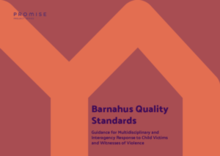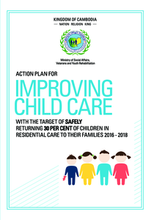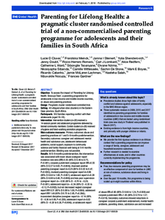Displaying 561 - 570 of 1070
Drawing on international and European law and guidance and the Barnahus model, this document introduces ten good practice standards, the “European Barnahus Standards”, for multidisciplinary and interagency services for child victims and witnesses of violence in Europe adapted to the child.
This infographic, and accompanying answers to Frequently Asked Questions (FAQs), describes Adverse Childhood Experiences (ACEs) and their relationship to toxic stress, and explains the impacts of ACEs on children's development.
This study examines and compares the extent of child maltreatment (physical, emotional, and sexual abuse; physical and emotional neglect) and lifetime traumatization with regard to current adult mental health in a group of survivors of institutional abuse and a comparison group from the community.
This article examines whether migrant children are viewed differently than native children, employing an experiment on a representative sample of the populations of Austria, Norway and Spain.
This study examined the relationship “Class-Based Visibility Bias” (CBVB) using statewide individual-level data in four states (Idaho, Michigan, Missouri, and New Hampshire) and nationwide county-level data.
The Bucharest Early Intervention Project (BEIP), a randomized controlled trial of foster/family care for young children with a history of institutionalization has provided the context to assess these relationships. This article reviews data from the BEIP with specific focus on attachment.
On 15 December 2017 the Australian Royal Commission into Institutional Response to Child Sexual Abuse presented a final report to the Governor-General, detailing the culmination of a five year inquiry into institutional responses to child sexual abuse and related matters.
This Action Plan to prevent and respond to violence against children in Cambodia identifies five key areas of intervention: 1) coordination and cooperation, 2) primary prevention, 3) multi-sectoral child protection response services, 4) law and policy formulation and amendment, 5) monitoring and evaluation.
This study examined the prevalence of child maltreatment as measured by the level of physical (moderate to severe) and emotional abuse and child labor, and the associated household level determinants of child maltreatment in Nepal.
The aim of this study was to assess the impact of ‘Parenting for Lifelong Health: Sinovuyo Teen’, a parenting programme for adolescents in low-income and middle-income countries, on abuse and parenting practices.





